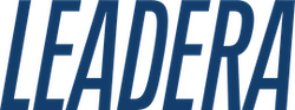
The Trim Tab metaphor was used by Buckminster Fuller ~ an American philosopher, systems theorist, architect, and inventor. I met him years ago. He shared something that has impacted me ever since: the Trim Tab Effect. It provides access to the possibility of making something happen more efficiently without exerting more effort. Bucky said:
“Think of the Queen Mary – the whole ship goes by and then comes the rudder. And there’s a tiny thing at the edge of the rudder called a trim tab. It’s a miniature rudder. Just moving the little trim tab builds a low pressure that pulls the rudder around. Takes almost no effort at all. But if you’re doing dynamic things mentally, the fact is that you can just put your foot out like that and the whole big ship of state is going to go. So I said, call me Trim Tab.”
Consider your hiring process. Face it, you’re not going to be happy if you hire the wrong person. Anyone who has done so knows exactly what we’re talking about here. It takes a lot of time to recognize that you’ve hired the wrong person. Then, a lot of time to admit it to yourself, to try to adjust to it, and then to attempt to fix the problem. After all that, it usually takes a lot of time to make the decision to fire that person. And you then have to start the process over again ~ more time, more energy, and more money. Have a process that makes something happen more efficiently without exerting more effort. Trim Tab.
Here’s the process we designed to ensure a good hire:
- Start with good, qualified candidates. We hire a good placement firm.
- The candidates will be pre-screened for skill level. In our firm it is essential that the right hire is competent in all Microsoft processes.
- The placement firm will pre-test and pre-qualify candidates before referring them.
- They will also conduct a thorough background check ~ don’t underestimate the value of this. I have, and it has backfired on us. Trim Tab.
- Conduct a thorough interview process. This means more than one interview with several people interviewing each potential hire. Sometimes there is the right “chemistry” with one person, but another manager may not experience the same. We conduct three interviews:
- The initial interview
- The call back
- A final interview. Simultaneously the firm is interviewing several other candidates in the process, rather than a linear process. This will expedite things significantly. Trim Tab.
- Test their skill. Give the potential candidates a TASK to complete. We do a lot of presentations with our clients, so it is essential that our employees are facile with generating PowerPoint presentations. The assigned task is to provide a 14-page presentation ~ “Tell us why we should hire you.”
- The document should represent who the candidates are and what they are about. The purpose of the PowerPoint is to present themselves in a way that represents them as the best person for the job. This will give the hiring committee a chance to find out more about the candidates; give a sample of the kind of work they do and the quality of the work they do; give a better sense of how they think of themselves, how they think and approach a situation, and how they think they might fit in with the company (we then give examples slide by slide of how the person might complete the task).
- PROVIDE SIMPLE, CLEAR DIRECTIONS: “Complete the following assignment and send it back within 24 hours.” Following directions is a “must.” I’ve learned a lot from this step as well ~ how a person follows directions is essential to the successful fulfillment of workflow in the firm. Trim Tab.
- Trust your instinct. Recognize the difference between what’s “on paper” vs. what your “gut” is telling you. Some candidates have all of the right qualifications, but something about them tells you they are “not quite right.” Determine the difference between their credibility versus how they “show up” for you in person. Trim Tab.
- Bring them into a public setting. We’re looking to discover what it’s going to be like working with this person ~ what they’re like in real life. We take them out for a lunch or dinner meeting. There, we can see how they interact with people ~ it reveals much more than how they behave in an interview. How do they treat the wait staff? How do they place their order ~ are they ordering from the menu or requesting the chef design something specific for them? Are they easy to interact with socially? Where is their attention focused ~ on themselves or on others? Trim Tab.
Kevin Cullen is President of Leadera Consulting Group, specializing in producing breakthrough business results. If you want more on this conversation or the firm, contact us at Leadera Consulting Group.
Kevin Cullen: kcullen@leaderacg.com, cc: acook@leaderacg.com
Read More
I’m sharing this blog article written by Ryan Holiday with you today because of its value and good advice for those just starting in their careers. Thanks to Regina Mellinger from Primary Services for bringing this great article to my attention. Please see the end of the article for the link to Ryan Holiday’s original blog post.
At the height of the financial crisis in 1975, Bill Belichick—the now six-time Super Bowl-winning head coach of the New England Patriots—was 23 years old and unemployed. Desperate for a job in football after an assistant position fell through, according to his biographer David Halberstam, he wrote some 250 letters to college and professional football coaches. Nothing came of it except a unpaid job for the Baltimore Colts.
The Colts’ head coach desperately needed someone for the one part of the job everyone else disliked: analyzing film.
Most people would have hated this job, especially back then, but it turned out to be the springboard through which the greatest coach in football was launched into his legendary career.
In this lowly position, Belichick thrived on what was considered grunt work, asked for it, and strove to become the best at precisely what others thought they were too good for. “He was like a sponge, taking it all in, listening to everything,” one coach said. “You gave him an assignment and he disappeared into a room and you didn’t see him again until it was done, and then he wanted to do more,” said another.
Most importantly, he made the other coaches look good. His insights gave them things they could give their players. It gave them an edge they would take credit for exploiting in the game.
It’s a strategy that all of us ought to follow, whatever stage of our careers we happen to be in. Forget credit. Do the work.
I’m lucky enough someone told me that early on, and I still try to follow it today. Don’t worry about credit, they said. Starting as an assistant in Hollywood, the best thing I could do was make my boss look good.
Forget credit so hard, they said, that you’re glad when other people get it instead of you.
It ended up being pretty decent advice, but it was nowhere near the right wording. I certainly wouldn’t have moved upwards as quickly as I have if I’d just sat there and worked on the way people thought about my boss.
Now that I’ve been around a bit, I think a better way to express it would be:
Find canvases for other people to paint on.
It’s what I now call the canvas strategy.
I used it as a research assistant for bestselling authors. I used it as Head of Marketing for American Apparel. And I continue to use it with my company Brass Check, advising companies like Google and Complex, as well as multi-platinum musicians and some of the biggest authors in the world.
I even wrote a chapter about it in Ego Is the Enemy.
One of the things I kept coming across in my research was that Belichick wasn’t unique. So many of the greats—everyone from Michelangelo to Leonardo da Vinci to Benjamin Franklin—used the same strategy to become great. The strategy? The canvas strategy.
In the Roman system of art and science, there existed a concept for which we have only a partial analog. Successful businessmen, politicians and rich playboys would subsidize certain favored writers, artists, and performers.
More than just being paid to produce works of art, these artists performed a number of tasks in exchange for protection, food and gifts. One of the roles was that of an anteambulo, literally meaning one who clears the path.
An anteambulo proceeded in front of his patron anywhere they traveled in Rome, making way, communicating messages, and generally making the patron’s life easier. The artists who did this were rewarded with stipends and commissions that allowed them to pursue their art.
That takes humility. The canvas strategy takes humility.
It’s a common attitude that transcends generations and societies—the angry, underappreciated geniuses forced to do stuff she doesn’t like for people she doesn’t respect as she makes her way in the world. How dare they force me to grovel like this. The injustice, the waste.
But when you enter a new field, we can usually be sure of a few things:
- You’re not nearly as good or as important as you think you are.
- You have an attitude that needs to be readjusted.
- Most of what you think you know, or most of what you learned in books or in school, is out of date or wrong.
There’s one fabulous way to work all of that out of your system:
Attach yourself to people in organizations who are already successful and subsume your identity into theirs and move both forward simultaneously.
It’s certainly more glamorous to pursue your own glory, though hardly as effective. Obeisance is the way forward. That’s the other side of this attitude. It reduces your ego at a critical time in your career, letting you absorb everything you can without the obstructions that block other’s vision and progress.
Imagine if for every person you met you thought of some way to help them, something you could do for them, and you looked at it in a way that entirely benefitted them and not you. The cumulative effect this would have overtime would be profound.
You would learn a great deal by solving diverse problems.
You’d develop a reputation for being indispensable.
You’d have countless new relationships.
You’d have an enormous bank of favors to call upon down the road.
That’s what the canvas strategy is about—helping yourself by helping others, making a concerted effort to trade your short term gratification for a longer term payoff.
Whereas everyone else wants to get credit and be respected, you could forget credit. Let others take their credit on credit while you defer and earn interest on the principle.
The strategy part of it is the hardest. It’s easy to be bitter, to hate even the thought of subservience, to despise those who have more means, more experience, more status than you, to tell yourself that every second not spent doing your work or working on yourself is a waste of your gift to insist, I will not be demeaned like this.
Once we fight this emotional and egotistical impulse, the canvas strategy is easy. The iterations are endless.
- Maybe it’s coming up with ideas to hand over to your boss.
- Find people, thinkers, up and comers to introduce them to. Cross wires to create new sparks.
- Find what nobody else wants to do and do it.
- Find inefficiency and waste and redundancies. Identify leaks and patches to free up resources for new areas.
- Produce more than everyone else and give your ideas away.
In other words, discover opportunities to promote their creativity, find outlets and people for collaboration, and eliminate distractions that hinder their progress and focus. It’s a rewarding and infinitely scalable power strategy. Consider each one an investment in relationships and in your own development.
If you pick up this mantle once, you’ll see what most people’s egos prevent them from appreciating. The person who clears the path ultimately controls its direction, just as the canvas shapes the painting.
*Written by Ryan Holiday. For original post on his blog, please go to https://ryanholiday.net/career-advice/
Read More